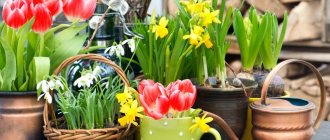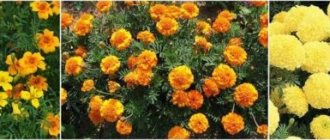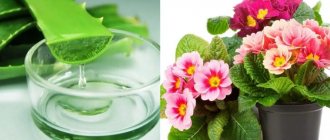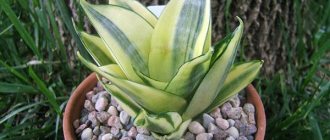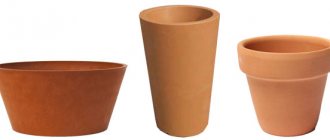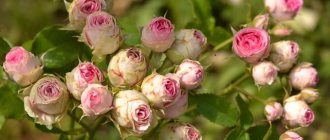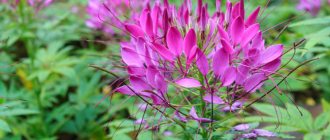Flower shops offer a wide variety of unusual flowers in blue, purple, green, and other non-standard tones. In order for the flowers to become an unusual tone, different selections and growing methods are used, but it is easier to change the plants yourself. How to paint flowers, what types of products exist - this will be discussed further.
Varieties of floral paints
Bouquet designers use the most convenient ways to implement their own and client’s creative ideas. Among them are the so-called “folk” ones, and, of course, professional ones. These include absorbable floral paints in powder form and spray paints.
A solution for watering is prepared from powdered paints; flower heads can be dipped into it or stems can be placed along which the colored solution will rise to the petals and give them the desired color. The method is excellent, but the result is sometimes disappointing: Not all petals are equally colored, or the wrong shade is obtained.
- The biggest advantage of spray paint is its opacity, so the coloring result will be exactly as expected.
- And the drying time of spray paint is short - from 10 to 40 minutes, depending on the manufacturer’s recommendations and the conditions in which the work is carried out.
Spray paint
Aerosol paint will satisfy the most exotic needs, as it has a wide color palette: shades of red, blue, green, yellow and even black.
This variety is complemented by special metallized paints - gold, silver, bronze. What’s important is that spray paint is absolutely harmless to flowers.
- Sprays can be universal, that is, they can be used not only for coloring flowers, stems and leaves of living and cut plants, but also used to decorate objects made from other materials.
- Fluorescent paints are also popular, and the effect lasts quite a long time. In good lighting, the flower looks as usual, and begins to flicker and glow only with the onset of darkness.
Floral varnishes
Leaf spray varnish is used for decorative decoration of leaves and buds of freshly cut flowers. It gives greenery the so-called “marketable appearance” - the leaves shine, dust does not settle on them, the evaporation of moisture slows down, but at the same time no obstacles are created to photosynthesis.
Important: Leaf spray is not suitable for spraying on leaves that have hair.
Floral glitter spray is used as a finishing touch. Glitter, like paint, is also universal.
Glitter spray varnish can achieve interesting effects. Shimmering, sparkling sparkles will add charm and a sense of celebration to even the most unsightly plants and objects, arrangements of tree branches and dried plants.
Liquid glitter comes in monochrome - silver, gold, red - and in a multicolor mixture.
Why do flowers change colors?
At the end of the article, all that remains is to reveal the secret of this trick. The thing is that plants receive water and nutrients through the root system. It absorbs nutrition and life-giving moisture, which are then distributed to all other organs of the flower. If you dilute the dye in water, it also ends up in the above-ground part of the plant. This is why the color gradually changes.
In the case of freshly cut, rootless plants, a process such as transpiration plays an important role. As soon as a flower loses the moisture necessary for life, it begins to intensively absorb it. The water is transferred along the stem to the leaves and petals, which literally change color completely within 8 hours.
Where else are floral sprays used?
Aerosols for flowers are great for a wide variety of decorative projects:
- Coloring dried flowers;
- Arrangement of compositions from artificial flowers;
- Dyeing cardboard, paper, wood, silk, shells, pine cones, moss, stone, metal, glass and ceramics.
Glitter and fluorescent sprays are also in demand by decorators and designers working in other areas. They are used in wedding decorations, they decorate New Year's compositions, stage props and crafts for the home.
Ink injection
Another way to color flowers is through dye injections. Even experts resort to this method quite rarely, because it is extremely destructive for plants. But if you need to change the color of chrysanthemum petals in the shortest possible time, then this method is most suitable.
To carry out staining you will need:
- chrysanthemums;
- syringe;
- food coloring;
- warm filtered water.
Dyeing fresh flowers by injection causes irreparable harm and is absolutely not suitable for indoor or garden plants. This happens as follows:
- First you need to prepare the chrysanthemums. The introduced dye will spread not only to the petals, but also to the stems and leaves. To make the color of the petals more saturated, the leaves must be completely cut off.
- Food coloring should be poured into warm filtered water and stirred thoroughly until completely dissolved. Then you need to draw the dye into the syringe.
- Carefully insert the needle into the stem at the base of the peduncle and squeeze the contents of the syringe into the flower.
- After 4-6 hours, the plant will begin to acquire the shade you have chosen. First of all, the thick veins will change color, and after another couple of hours you will receive a chrysanthemum with a new bright color.
With this method you can also experiment with introducing several shades into the stem. The result can be an unusually beautiful flower with a beautiful and vibrant gradient.
What flowers are suitable for coloring?
To change color using powder paints, it is better to choose white or beige flowers - they can be given any shade.
Bright leaves can also be painted, for example, making the tips of the petals darker or lighter.
- Only sprays can radically change the color of dark petals.
- Fully blossomed flowers are usually chosen for painting, although no one forbids painting buds.
- The most commonly painted flowers are roses, dahlias, hydrangeas, daisies, chrysanthemums, daisies, and orchids.
- Potted plants can also be painted, but it is not recommended to paint succulents during the flowering period.
Some methods of processing plants to create flower arrangements
Winter flower arrangements often use a material called dried flowers. Plants lovingly collected from a summer cottage, field, or forest are subjected to special treatment. This can be natural, flat and volumetric drying, treatment with steam, boiling water, paraffin or glycerin, bleaching and coloring, skeletonization and crystallization, twisting and bending of branches.
The main requirement for most plants intended for further processing is that they be collected in dry, sunny weather . True, there are rare exceptions, for example, yarrow retains its color better if it is placed in water for a couple of days before drying, and bedstraw dried in a vase with water retains its decorative effect. When dried in a vase without water, cereals look beautiful, but in physalis and gomphrena the stem becomes broken.
Some flowers (astilbe, kermek, helichrysum, physalis, marigold, ranunculus, rose) can be dried on the root in their natural state without cutting, and then cut and placed in a vase.
The simplest and most common way to preserve flowers and plants is to air dry them, while many plants retain their color when dried naturally. It is better to dry flowers without leaves in bunches with their heads down, freeing them from unnecessary leaves (tansy, limonium, solidago).
For ease of use in a composition of material with prickly or fragile stems (tease, acroclinum, pepper), fruits and inflorescences are separated and secured on a wire.
This concerns the NATURAL DRYING OF PLANTS.
FLAT DRYING of plants consists of laying out straightened plants between sheets of paper, lined with newspaper or filter paper and pressed down with a weight. As moisture is absorbed, the paper must be changed.
VOLUME DRYING is the drying of plants in sand or cotton wool. For preservation in sand, you can make a special device, which is a small box with a pull-out bottom and a fine mesh inserted above it. The lattice insert is fixed at a distance of 3 cm from the bottom. The box is filled with well-washed and calcined sand up to the grate. Plants with flat inflorescences - baskets - are placed with their stems up (asters, buttercups, pansies, daisies, forget-me-nots), and with voluminous and double inflorescences - downwards (marigolds, dahlias, peonies, roses, lilies, etc.).
Technology for coloring freshly cut and potted flowers
It does not tolerate fuss, but at the same time it is so simple that even a child can handle the job. First you need to choose a suitable room, since the process is quite dirty: paint particles fall on surrounding things and objects. Then cover the work surface with film or newspapers, prepare a vase or other container in which the flowers will dry.
Important: Work with paint or varnish must be carried out at room temperature in a well-ventilated area.
Shake paint and varnish well before use. Do not spray on an assembled bouquet. Paint each flower separately, holding it at arm's length, since according to the instructions, the distance between the can and the object should be about 40 cm.
- The color intensity depends on the thickness of the paint layer. If the color does not seem bright enough, then the dyeing procedure must be repeated.
- Dry upright. Moving the vase to a dry, warm room will speed up drying.
How are black roses made?
The words black in the names of selected varieties of roses are a kind of “trick”. The petals have dark lilac, red, and crimson shades that look black in certain lighting.
Black Rose
The bouquets we sell are painted, and the procedure itself is easy and simple:
- Leaves are cut from the flower. You can leave them, but they will also stain, which needs to be taken into account.
- Fill the vase with warm water in which special paint is diluted. It has to be ordered online, since it is rarely available for free sale. You can use gouache or ink.
- The end of the stem is cut off one centimeter at an oblique angle so that the prepared composition is better absorbed.
- Place the rose in a vase and leave for 15-24 hours. The exact time depends on what product is used.
It is not white, but red petals that are best painted black. It is recommended to take not a blooming flower, but slightly open buds. They will last as long as possible.
How to paint dried flowers and artificial flowers
The technology is absolutely the same as in the case of living plants, although coloring with powder dye is cheaper. True, with dried flowers the powder does not always give the desired result.
There are two reasons for this: The heads usually have a brown tint, and some petals may be discolored or damaged, which will certainly appear after a budget coloring with floral powders.
Therefore, it is better to paint dried flowers with a spray, since only this guarantees 100% and even painting.
Will the flower be damaged by the dye?
Through numerous experiments, it was found that the paint does not have any negative effect on living plants. If you are not going to abuse the flowers using enamel or oil-based compounds (we strongly do not recommend using these paints and varnishes, as they will instantly destroy the plant), nothing bad will definitely happen to them. Unless the original color changes, but this is not a side effect, but the main goal of our manipulations.
What compositions should be used so as not to provoke a negative reaction and not harm a living indoor plant? Food coloring is best suited for this purpose. As it turned out, they are absolutely safe for any living organisms, including flowers.
Alternative dyeing methods
When there were no special paints for designers and florists, flowers were also painted. For freshly cut or live ones, beet juice and food coloring were used, which were dissolved in water.
The stems, cut at an angle of 45 degrees, were placed in this water for a day. To obtain a multi-colored seven-flowered flower, the stem was split and each part was placed in solutions of a different color.
Growing flowers were simply watered with this solution. This method is still used today, but compared to paint it has significant disadvantages:
- Not all flowers absorb pigment well, so the method is most effective when painting plants with porous stems;
- Inability to predict the result with cut plants;
- When watering is stopped, potted plants gradually return to their “native” color.
Fabric dyes were used for dried plants and other natural materials. They were dissolved in boiling water.
Floral paints fit perfectly on any surface. If just yesterday it was unclear how to repaint the base of your favorite sconce, which no longer “fits” into the updated interior, or update the frame of a vintage mirror, then today there is one universal answer - use spray paint for flowers.
Repainting freshly cut plants
Experiments with roses, dahlias and other freshly cut plants are much easier to carry out, since they do not have to be removed from their pots.
The staining procedure in this case is as follows:
• dissolve the dye in a vase with water; • carefully trim the flower stems, trying to squeeze them minimally in your hands; • add sugar, which speeds up the process; • put flowers in a vase; • transfer the container to a well-lit windowsill.
The first results of the experiment can be observed within an hour and a half. But for the plant to acquire a completely different color, it will take at least eight hours.
In the same way, you can paint a rose in several different colors. For this purpose, we will need to dip it first in one dye, and after the already mentioned 8 hours – in another dye. Additionally, you will need a new cut, which must be covered well with your finger to prevent air from entering the stem.
Photo of spray paint for flowers
Coloring single-color roses
Buy some white roses. The paint will show up best on these colors. If you are using colored roses, the dye will add its own tint to the color. For example, if you try to color a yellow rose blue, you will end up with green.
Cut the stem underwater with scissors or a sharp knife at an angle. Shorten it to 25-30 centimeters. This will help the rose absorb the dye better.
You can make the stems even shorter if you want the roses to absorb the dye faster. This will also help the roses appear brighter.
Trim off all thorns and leaves.
Master class Early development Artificial floristry Painting fresh flowers
After March 8, there were many flowers left in varying degrees of wilting. We sorted out the bouquets and experimented with Lidochka on the remains of the flowers. I remembered that fresh flowers can be painted and we devoted the last 2 weeks to this. This photo shows tinted roses.
Although cut fresh flowers are rootless, they also have the ability to absorb water. This process is called transpiration (evaporation of water by a plant). Water evaporates from the surface of flowers and stems through the cell walls of epidermal cells and integumentary layers (cuticular transpiration) and through stomata (stomatal transpiration). As a result of the loss of water during transpiration, the suction force in the cells increases. In addition, transpiration is involved in creating a continuous flow of water with dissolved mineral and organic compounds. Source We took advantage of this property by placing light roses in tinted water. This rose stood overnight in water with red dye.
Place the rose in a vase filled with water
Leave the flower in the water while you prepare the dye bath. If you want to make a bouquet, you can cut more roses. The work is done one flower at a time.
Prepare the dye bath. Fill ½ cup (120 milliliters) with warm water. Add 20-30 drops of food coloring or liquid watercolor. If you want something more gentle, use 5 to 10 drops and a glass of water (240 milliliters) instead.
Place the rose in water, then wait for it to change color. This will take at least 4 hours, so be patient! The longer you wait, the deeper the shade becomes. After 4 hours or so, the rose will take on a pastel color. If you want it to be deeper, you will have to wait 1 to 2 days. Keep in mind that the roses will be striped and spotted.
Rose petals have small veins. They will look darker as a result of painting. If you are not happy with this, leave the rose in the dye even longer.
"Dad is offended." Agata Muceniece about her relationship with Priluchny after the divorce
A Brazilian travels 36 km by bike every day to take his loved one home.
Women's jeans: before you buy them, you need to pay attention to one detail
To get an interesting effect, paint a rose in one color for about 3 hours, then put it in another color for 2 hours, then in a third color for 1 hour.
Once the rose is the color you want, remove it from the paint and place it in a vase filled with clean water. If you want to help your rose last longer, add a little floral preservative to the water.
Dip the rose in the dye for 2-3 seconds
Hold it upside down by the stem, then dip the flower part into the paint. Twist it so that each petal is covered with liquid. You only need to leave it in the dye for about 2-3 seconds.
This method is different from typical dyeing methods. You only dip the flower part in the paint, not the stem.
Pick up the rose. Hold it upside down over a bucket so that excess paint can drip back. Shake the rose gently, but be careful not to shake paint onto yourself or surrounding objects.
Rinse the rose under clean water. Shake again to remove excess moisture. If the color is too dark, rinse the flower under water a little longer. Keep in mind that the color will lighten as the rose dries.

